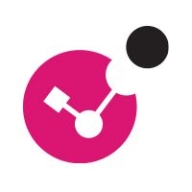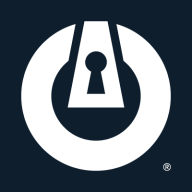

Check Point Harmony SASE and ThreatLocker compete in cybersecurity. Harmony SASE seems to have the upper hand in network connectivity options, while ThreatLocker focuses on endpoint security.
Features: Check Point Harmony SASE provides robust cybersecurity features such as VPN connectivity, user access controls, and integration with Citrix SD-WAN. Users value the Always On VPN and Zero Trust Network Access. ThreatLocker offers comprehensive security with application control, allowlisting, and ring-fencing, allowing the blocking of unauthorized applications.
Room for Improvement: Check Point Harmony SASE users desire better networking features like enhanced SD-WAN, timely real-time alerts, and multiple location settings. Users report slow portal access and instability with a large user load. For ThreatLocker, improvements are sought in the user interface, more built-in policies, and enhanced training options like podcasts, as the learning mode can lead to incomplete policy creation.
Ease of Deployment and Customer Service: Check Point Harmony SASE offers public, private, and hybrid cloud deployments, praised for its support team but facing slower response times and initial setup difficulties. ThreatLocker focuses on on-premises and hybrid cloud deployments, with praised ease in setup and timely technical support, although there are some requests for extended support hours and training improvements.
Pricing and ROI: Check Point Harmony SASE is seen as having a higher pricing tier than competitors but offers value for larger companies, with a perceived positive ROI. ThreatLocker is noted for its reasonable and competitive pricing, offering comprehensive endpoint security that is seen as cost-effective, delivering good value and benefits that outweigh costs.
We are saving 40% of our time, which is good.
If something were to happen without ThreatLocker, the cost would be huge, and thus, having it is definitely worth it.
The main return on investment is peace of mind, knowing that with ThreatLocker on any endpoint, it will almost always block all malicious code or exploits, even zero-day exploits.
It keeps malware, Trojans, and ransomware at bay.
They have been very responsive, helpful, and knowledgeable.
I would rate their customer support a ten out of ten.
Their support is world-class.
I would rate it nine out of ten for scalability.
I started off with just the servers, and within a month and a half, I set up the entire company with ThreatLocker.
It seems to primarily operate on the endpoints rather than at a central location pushing out policies.
I would rate it a ten out of ten for scalability.
There are some lags and glitches with connectivity, so I would rate the stability as between seven or eight out of ten.
After the last improvement, I can say it is much more stable now.
For five years, we have not had a problem.
Once deployed, it downloads the policies locally, so even if the computer doesn't have internet, it doesn't matter.
It has been very stable, reliable, and accessible.
A local data center in Turkey would enhance the product, as currently, our Internet traffic goes to another country, which is problematic for us.
The connectivity issue can be improved as at times it lags when connecting to their server.
Controlling the cloud environment, not just endpoints, is crucial.
This is problematic when immediate attention is needed.
Comprehensive 24-hour log monitoring is a valuable enhancement for both business and enterprise-level users.
Cost efficiency is a consideration, as SASE products are not the cheapest security products.
It is a bit expensive.
After conversations with other partners, it became clear we underpriced it initially, which caused most of our issues.
We are moving towards the Unified solution, where they basically bundle everything together, providing us better stability with the ability to bring in new product offerings without having to go back to the customer and say, 'This is going to cost you.'
I had a really good deal at the time, and it continues to be cost-effective.
The firewall management is the most valuable feature for me.
The best key features of Harmony are stabilization, private access, and Internet access.
ThreatLocker Zero Trust Endpoint Protection Platform's ability to block access to unauthorized applications has been excellent.
It protects our customers.
The major benefit is fewer breaches overall, as nothing can be run without prior approval. This helps my company protect its data and secure itself effectively.


Perimeter 81 is a cloud-based network security and software-defined perimeter (SDP) solution designed to provide secure access to resources in the cloud, data centers, and on-premises environments. It offers a unified platform for organizations to manage and secure their network infrastructure, regardless of the location or type of resources.
Perimeter 81 Benefits:
Perimeter 81 Features:
Reviews from Real Users
PeerSpot user, Frontend Developer at Limelight Networks, states that "We use some VPN solutions, and Perimeter 81 has the best user experience for desktop or mobile".
Daniel Goldfeld, Vice President of Customer Success at Mine - The All-in-One Privacy Suite, says that Perimeter 81 has "Great SAML and SCIM support with the ability to deploy site-2-site tunnels with specific IP restrictions".
Another PeerSpot user, Accounts Payable Specialist at Simera, writes that "The feature that I have found to be most valuable is the reputation that the company has regarding privacy. Nowadays, this is critical, especially when you do all of your work online."
ThreatLocker Zero Trust Endpoint Protection Platform offers robust endpoint security through application control and allowlisting, safeguarding servers and workstations from unauthorized software execution.
ThreatLocker Zero Trust Endpoint Protection Platform provides extensive application control with features like ring-fencing and selective elevation, ensuring meticulous execution management. Offering learning mode and extensive support, it integrates threat detection and activity monitoring to enhance compliance, reduce costs, and bolster cybersecurity through alerts and approvals. Despite its strengths, there are areas for improvement in training flexibility, policy updates, and interface enhancements, along with challenges in handling non-digitally signed software. Deployed across environments, it works well with existing cybersecurity instruments for real-time threat prevention.
What are the top features of ThreatLocker?ThreatLocker Zero Trust Endpoint Protection Platform is widely implemented to safeguard IT infrastructures against unauthorized access and application use. In sectors where data security is paramount, this platform enables users to prevent unauthorized software installations and control device applications, ensuring real-time threat prevention and compliance with industry regulations.
We monitor all ZTNA reviews to prevent fraudulent reviews and keep review quality high. We do not post reviews by company employees or direct competitors. We validate each review for authenticity via cross-reference with LinkedIn, and personal follow-up with the reviewer when necessary.